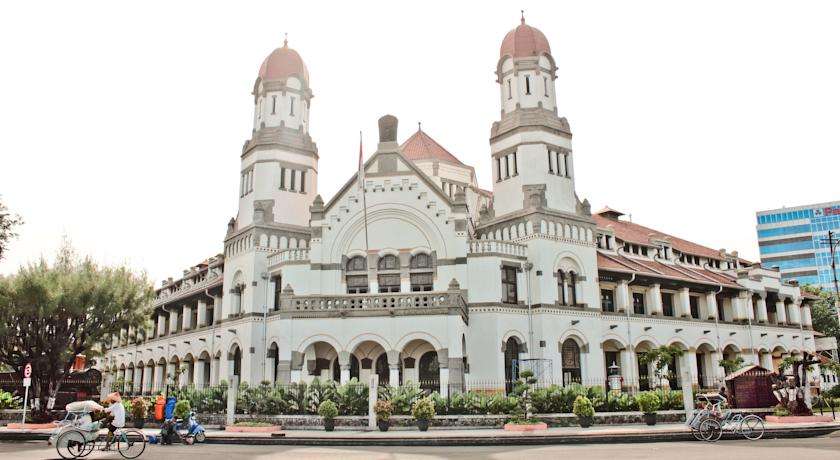中文 |

Province of Central Java, Indonesia
Source: 福建省人民政府外事办公室 | 2017-04-10 11:39 Click:

Area: 32,800.69 km2
Population: 32.8 million
Capital: Semarang
Overview
Located in the middle of the island of Java, the Central Java province is bordered by West Java and East Java provinces. A small portion of its south region is the Yogyakarta Special Region province, fully enclosed on the landward side by the Central Java province. To the north and the south, the Central Java province faces the Java Sea and the Indian Ocean. Central Java includes offshore islands such as Karimun Jawa Islands in the north, and Nusakambangan in the southwest. Yogyakarta is historically and culturally part of the Central Java region, although it is now a separate administrative entity.
The average temperature in Central Java is between 18–28 degrees Celsius and the relative humidity varies between 73–94 percent. While a high level of humidity exists in most low-lying parts of the province, it drops significantly in the upper mountains. The highest average annual rainfall of 3,990 mm with 195 rainy days was recorded in Salatiga.
Due to its active volcanic history, volcanic ash makes Central Java highly fertile agriculture land. Paddy fields are extensive, except in the southeastern Gunung Kidul region partly due to the high concentration of limestone and its location in a rain shadow from the prevailing weather.
The largest rivers are the Serayu in the west, which empties into the Indian Ocean, and the Solo which flows into East Java.
Nowadays Central Java (excluding Yogyakarta Special Region) is divided into 29 regencies and 6 cities, the latter being independent of any regency. These contemporary regencies and cities can further be subdivided into 565 districts. These districts are further subdivided into 7,804 rural communes or "villages" and 764 urban communes.
Economy
GDP in the province of Central Java was estimated to be around $US 98 billion in 2010, with a per capita income of around $US 3,300. Economic growth in the province is quite rapid and GDP is forecast to reach $US 180 billion by 2015.
Much of Central Java is a fertile agricultural region. The primary food crop is wet rice. An elaborate irrigation network of canals, dams, aqueducts, and reservoirs has greatly contributed to Central Java's the rice-growing capacity over the centuries. In 2001, productivity of rice was 5,022 kilograms/ha, mostly provided from irrigated paddy field (± 98%). Klaten Regency had the highest productivity with 5525 kilograms/ha.
Other crops, also mostly grown in lowland areas on small peasant landholdings, are corn (maize), cassava, peanuts (groundnuts), soybeans, and sweet potatoes. Terraced hillslopes and irrigated paddy fields are familiar features of the landscape. Kapok, sesame, vegetables, bananas, mangoes, durian fruits, citrus fruits, and vegetable oils are produced for local consumption. Tea, coffee, tobacco, rubber, sugarcane and kapok; and coconuts are exported. Several of these cash crops at a time are usually grown on large family estates. Livestock, especially water buffalo, is raised primarily for use as draft animals. Salted and dried fish are imported.
Sister Relationship
On 06 Dec., 2003, Ms. Wang Meixiang, Vice Governor of Fujian Province signed the Agreement on Establishment of Friendship Province Relationship between Fujian and Central Java with Mr. Mardiyanto, Governor of Central Java Province in Semarang.